1、设计用户操作日志表: sys_oper_log

对应实体类为SysOperLog.java
import com.baomidou.mybatisplus.annotation.IdType;
import com.baomidou.mybatisplus.annotation.TableId;
import io.swagger.annotations.ApiModelProperty;
import lombok.Data;
import lombok.EqualsAndHashCode;
import lombok.experimental.Accessors;
import java.io.Serializable;
import java.util.Date;
/**
* <p>
* 操作日志记录
* </p>
*/
@Data
@EqualsAndHashCode(callSuper = false)
@Accessors(chain = true)
public class SysOperLog implements Serializable {
private static final long serialVersionUID = 1L;
@TableId(value = "id", type = IdType.AUTO)
@ApiModelProperty("主键Id")
private Integer id;
@ApiModelProperty("模块标题")
private String title;
@ApiModelProperty("参数")
private String optParam;
@ApiModelProperty("业务类型(0其它 1新增 2修改 3删除)")
private Integer businessType;
@ApiModelProperty("路径名称")
private String uri;
@ApiModelProperty("操作状态(0正常 1异常)")
private Integer status;
@ApiModelProperty("错误消息")
private String errorMsg;
@ApiModelProperty("操作时间")
private Date operTime;
}2、引入依赖
<dependency>
<groupId>com.alibaba</groupId>
<artifactId>fastjson</artifactId>
<version>2.0.9</version>
</dependency>
<dependency>
<groupId>org.springframework.boot</groupId>
<artifactId>spring-boot-starter-aop</artifactId>
</dependency>3、自定义用户操作日志注解
MyLog.java
import java.lang.annotation.*;
@Target({ElementType.PARAMETER, ElementType.METHOD})
@Retention(RetentionPolicy.RUNTIME)
@Documented
public @interface MyLog {
// 自定义模块名,eg:登录
String title() default "";
// 方法传入的参数
String optParam() default "";
// 操作类型,eg:INSERT, UPDATE...
BusinessType businessType() default BusinessType.OTHER;
}BusinessType.java — 操作类型枚举类
public enum BusinessType {
// 其它
OTHER,
// 查找
SELECT,
// 新增
INSERT,
// 修改
UPDATE,
// 删除
DELETE,
}4、自定义用户操作日志切面
LogAspect.java
import com.alibaba.fastjson.JSONObject;
import iot.sixiang.license.entity.SysOperLog;
import iot.sixiang.license.handler.IotLicenseException;
import iot.sixiang.license.jwt.UserUtils;
import iot.sixiang.license.service.SysOperLogService;
import lombok.extern.slf4j.Slf4j;
import org.apache.commons.lang3.StringUtils;
import org.aspectj.lang.JoinPoint;
import org.aspectj.lang.Signature;
import org.aspectj.lang.annotation.AfterReturning;
import org.aspectj.lang.annotation.AfterThrowing;
import org.aspectj.lang.annotation.Aspect;
import org.aspectj.lang.annotation.Pointcut;
import org.aspectj.lang.reflect.MethodSignature;
import org.springframework.beans.factory.annotation.Autowired;
import org.springframework.stereotype.Component;
import java.lang.reflect.Method;
import java.util.Date;
import java.util.HashMap;
import java.util.Map;
@Aspect
@Component
@Slf4j
public class LogAspect {
/**
* 该Service及其实现类相关代码请自行实现,只是一个简单的插入数据库操作
*/
@Autowired
private SysOperLogService sysOperLogService;
/**
* @annotation(MyLog类的路径) 在idea中,右键自定义的MyLog类-> 点击Copy Reference
*/
@Pointcut("@annotation(xxx.xxx.xxx.MyLog)")
public void logPointCut() {
log.info("------>配置织入点");
}
/**
* 处理完请求后执行
*
* @param joinPoint 切点
*/
@AfterReturning(pointcut = "logPointCut()")
public void doAfterReturning(JoinPoint joinPoint) {
handleLog(joinPoint, null);
}
/**
* 拦截异常操作
*
* @param joinPoint 切点
* @param e 异常
*/
@AfterThrowing(value = "logPointCut()", throwing = "e")
public void doAfterThrowing(JoinPoint joinPoint, Exception e) {
handleLog(joinPoint, e);
}
private void handleLog(final JoinPoint joinPoint, final Exception e) {
// 获得MyLog注解
MyLog controllerLog = getAnnotationLog(joinPoint);
if (controllerLog == null) {
return;
}
SysOperLog operLog = new SysOperLog();
// 操作状态(0正常 1异常)
operLog.setStatus(0);
// 操作时间
operLog.setOperTime(new Date());
if (e != null) {
operLog.setStatus(1);
// IotLicenseException为本系统自定义的异常类,读者若要获取异常信息,请根据自身情况变通
operLog.setErrorMsg(StringUtils.substring(((IotLicenseException) e).getMsg(), 0, 2000));
}
// UserUtils.getUri();获取方法上的路径 如:/login,本文实现方法如下:
// 1、在拦截器中 String uri = request.getRequestURI();
// 2、用ThreadLocal存放uri,UserUtils.setUri(uri);
// 3、UserUtils.getUri();
String uri = UserUtils.getUri();
operLog.setUri(uri);
// 处理注解上的参数
getControllerMethodDescription(joinPoint, controllerLog, operLog);
// 保存数据库
sysOperLogService.addOperlog(operLog.getTitle(), operLog.getBusinessType(), operLog.getUri(), operLog.getStatus(), operLog.getOptParam(), operLog.getErrorMsg(), operLog.getOperTime());
}
/**
* 是否存在注解,如果存在就获取,不存在则返回null
* @param joinPoint
* @return
*/
private MyLog getAnnotationLog(JoinPoint joinPoint) {
Signature signature = joinPoint.getSignature();
MethodSignature methodSignature = (MethodSignature) signature;
Method method = methodSignature.getMethod();
if (method != null) {
return method.getAnnotation(MyLog.class);
}
return null;
}
/**
* 获取Controller层上MyLog注解中对方法的描述信息
* @param joinPoint 切点
* @param myLog 自定义的注解
* @param operLog 操作日志实体类
*/
private void getControllerMethodDescription(JoinPoint joinPoint, MyLog myLog, SysOperLog operLog) {
// 设置业务类型(0其它 1新增 2修改 3删除)
operLog.setBusinessType(myLog.businessType().ordinal());
// 设置模块标题,eg:登录
operLog.setTitle(myLog.title());
// 对方法上的参数进行处理,处理完:userName=xxx,password=xxx
String optParam = getAnnotationValue(joinPoint, myLog.optParam());
operLog.setOptParam(optParam);
}
/**
* 对方法上的参数进行处理
* @param joinPoint
* @param name
* @return
*/
private String getAnnotationValue(JoinPoint joinPoint, String name) {
String paramName = name;
// 获取方法中所有的参数
Map<String, Object> params = getParams(joinPoint);
// 参数是否是动态的:#{paramName}
if (paramName.matches("^#\\{\\D*\\}")) {
// 获取参数名,去掉#{ }
paramName = paramName.replace("#{", "").replace("}", "");
// 是否是复杂的参数类型:对象.参数名
if (paramName.contains(".")) {
String[] split = paramName.split("\\.");
// 获取方法中对象的内容
Object object = getValue(params, split[0]);
// 转换为JsonObject
JSONObject jsonObject = (JSONObject) JSONObject.toJSON(object);
// 获取值
Object o = jsonObject.get(split[1]);
return String.valueOf(o);
} else {// 简单的动态参数直接返回
StringBuilder str = new StringBuilder();
String[] paraNames = paramName.split(",");
for (String paraName : paraNames) {
String val = String.valueOf(getValue(params, paraName));
// 组装成 userName=xxx,password=xxx,
str.append(paraName).append("=").append(val).append(",");
}
// 去掉末尾的,
if (str.toString().endsWith(",")) {
String substring = str.substring(0, str.length() - 1);
return substring;
} else {
return str.toString();
}
}
}
// 非动态参数直接返回
return name;
}
/**
* 获取方法上的所有参数,返回Map类型, eg: 键:"userName",值:xxx 键:"password",值:xxx
* @param joinPoint
* @return
*/
public Map<String, Object> getParams(JoinPoint joinPoint) {
Map<String, Object> params = new HashMap<>(8);
// 通过切点获取方法所有参数值["zhangsan", "123456"]
Object[] args = joinPoint.getArgs();
// 通过切点获取方法所有参数名 eg:["userName", "password"]
MethodSignature signature = (MethodSignature) joinPoint.getSignature();
String[] names = signature.getParameterNames();
for (int i = 0; i < args.length; i++) {
params.put(names[i], args[i]);
}
return params;
}
/**
* 从map中获取键为paramName的值,不存在放回null
* @param map
* @param paramName
* @return
*/
private Object getValue(Map<String, Object> map, String paramName) {
for (Map.Entry<String, Object> entry : map.entrySet()) {
if (entry.getKey().equals(paramName)) {
return entry.getValue();
}
}
return null;
}
}5、MyLog注解的使用
@GetMapping("login")
@MyLog(title = "登录", optParam = "#{userName},#{password}", businessType = BusinessType.OTHER)
public DataResult login(@RequestParam("userName") String userName, @RequestParam("password") String password) {
...
}6、最终效果

The above is the detailed content of How to use SpringBoot+Aop to record user operation logs. For more information, please follow other related articles on the PHP Chinese website!
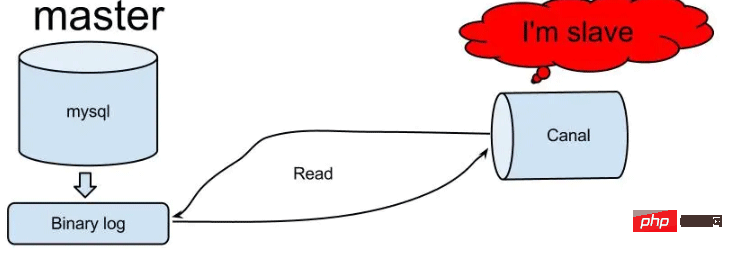 怎么使用SpringBoot+Canal实现数据库实时监控May 10, 2023 pm 06:25 PM
怎么使用SpringBoot+Canal实现数据库实时监控May 10, 2023 pm 06:25 PMCanal工作原理Canal模拟MySQLslave的交互协议,伪装自己为MySQLslave,向MySQLmaster发送dump协议MySQLmaster收到dump请求,开始推送binarylog给slave(也就是Canal)Canal解析binarylog对象(原始为byte流)MySQL打开binlog模式在MySQL配置文件my.cnf设置如下信息:[mysqld]#打开binloglog-bin=mysql-bin#选择ROW(行)模式binlog-format=ROW#配置My
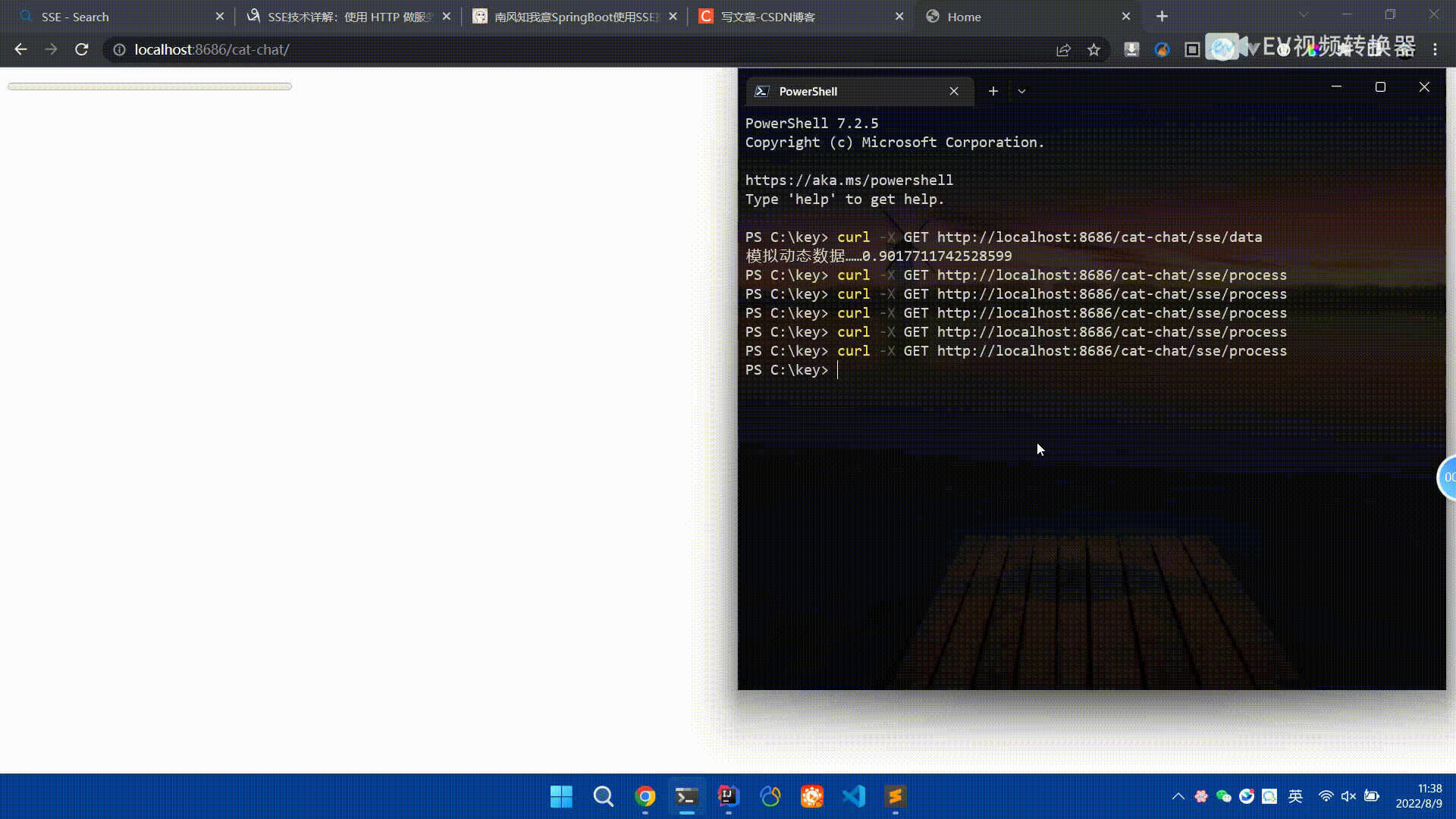 Spring Boot怎么使用SSE方式向前端推送数据May 10, 2023 pm 05:31 PM
Spring Boot怎么使用SSE方式向前端推送数据May 10, 2023 pm 05:31 PM前言SSE简单的来说就是服务器主动向前端推送数据的一种技术,它是单向的,也就是说前端是不能向服务器发送数据的。SSE适用于消息推送,监控等只需要服务器推送数据的场景中,下面是使用SpringBoot来实现一个简单的模拟向前端推动进度数据,前端页面接受后展示进度条。服务端在SpringBoot中使用时需要注意,最好使用SpringWeb提供的SseEmitter这个类来进行操作,我在刚开始时使用网上说的将Content-Type设置为text-stream这种方式发现每次前端每次都会重新创建接。最
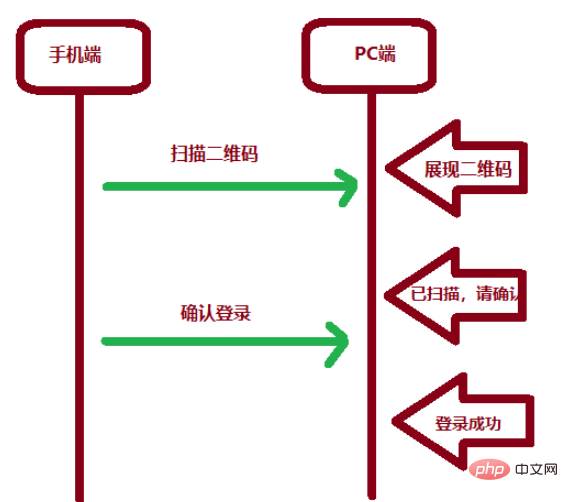 SpringBoot怎么实现二维码扫码登录May 10, 2023 pm 08:25 PM
SpringBoot怎么实现二维码扫码登录May 10, 2023 pm 08:25 PM一、手机扫二维码登录的原理二维码扫码登录是一种基于OAuth3.0协议的授权登录方式。在这种方式下,应用程序不需要获取用户的用户名和密码,只需要获取用户的授权即可。二维码扫码登录主要有以下几个步骤:应用程序生成一个二维码,并将该二维码展示给用户。用户使用扫码工具扫描该二维码,并在授权页面中授权。用户授权后,应用程序会获取一个授权码。应用程序使用该授权码向授权服务器请求访问令牌。授权服务器返回一个访问令牌给应用程序。应用程序使用该访问令牌访问资源服务器。通过以上步骤,二维码扫码登录可以实现用户的快
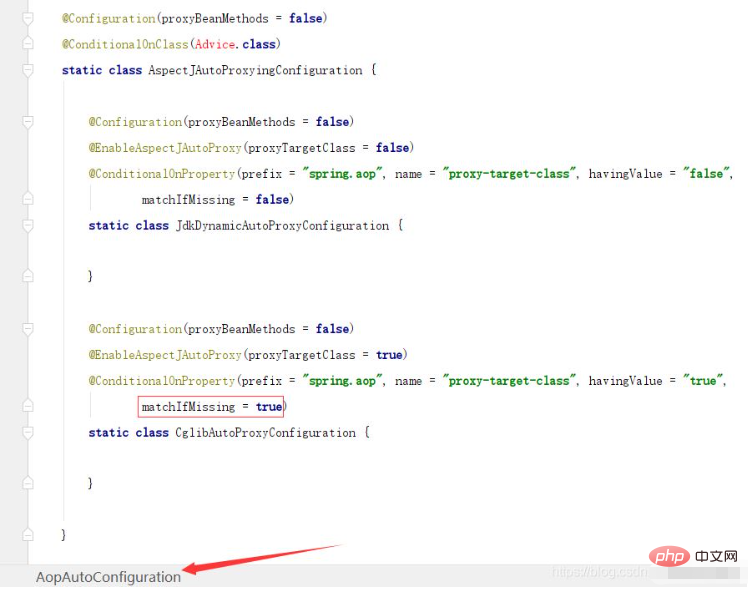 SpringBoot/Spring AOP默认动态代理方式是什么May 10, 2023 pm 03:52 PM
SpringBoot/Spring AOP默认动态代理方式是什么May 10, 2023 pm 03:52 PM1.springboot2.x及以上版本在SpringBoot2.xAOP中会默认使用Cglib来实现,但是Spring5中默认还是使用jdk动态代理。SpringAOP默认使用JDK动态代理,如果对象没有实现接口,则使用CGLIB代理。当然,也可以强制使用CGLIB代理。在SpringBoot中,通过AopAutoConfiguration来自动装配AOP.2.Springboot1.xSpringboot1.xAOP默认还是使用JDK动态代理的3.SpringBoot2.x为何默认使用Cgl
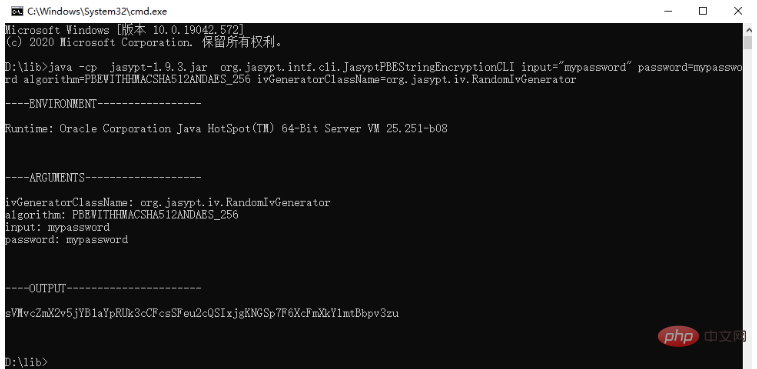 spring boot怎么对敏感信息进行加解密May 10, 2023 pm 02:46 PM
spring boot怎么对敏感信息进行加解密May 10, 2023 pm 02:46 PM我们使用jasypt最新版本对敏感信息进行加解密。1.在项目pom文件中加入如下依赖:com.github.ulisesbocchiojasypt-spring-boot-starter3.0.32.创建加解密公用类:packagecom.myproject.common.utils;importorg.jasypt.encryption.pbe.PooledPBEStringEncryptor;importorg.jasypt.encryption.pbe.config.SimpleStrin
 使用Java SpringBoot集成POI实现Word文档导出Apr 21, 2023 pm 12:19 PM
使用Java SpringBoot集成POI实现Word文档导出Apr 21, 2023 pm 12:19 PM知识准备需要理解ApachePOI遵循的标准(OfficeOpenXML(OOXML)标准和微软的OLE2复合文档格式(OLE2)),这将对应着API的依赖包。什么是POIApachePOI是用Java编写的免费开源的跨平台的JavaAPI,ApachePOI提供API给Java程序对MicrosoftOffice格式档案读和写的功能。POI为“PoorObfuscationImplementation”的首字母缩写,意为“简洁版的模糊实现”。ApachePOI是创建和维护操作各种符合Offic
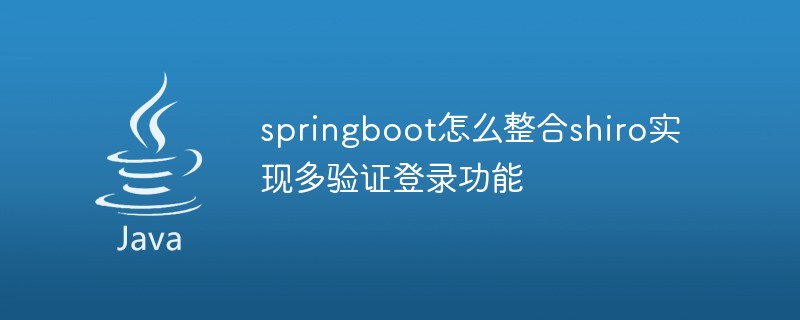 springboot怎么整合shiro实现多验证登录功能May 10, 2023 pm 04:19 PM
springboot怎么整合shiro实现多验证登录功能May 10, 2023 pm 04:19 PM1.首先新建一个shiroConfigshiro的配置类,代码如下:@ConfigurationpublicclassSpringShiroConfig{/***@paramrealms这儿使用接口集合是为了实现多验证登录时使用的*@return*/@BeanpublicSecurityManagersecurityManager(Collectionrealms){DefaultWebSecurityManagersManager=newDefaultWebSecurityManager();
 SpringBoot项目打包发布到外部tomcat遇到的问题怎么解决May 10, 2023 pm 05:49 PM
SpringBoot项目打包发布到外部tomcat遇到的问题怎么解决May 10, 2023 pm 05:49 PM先说遇到问题的情景:初次尝试使用springboot框架写了个小web项目,在IntellijIDEA中能正常启动运行。使用maven运行install,生成war包,发布到本机的tomcat下,出现异常,主要的异常信息是.......LifeCycleException。经各种搜索,找到答案。springboot因为内嵌tomcat容器,所以可以通过打包为jar包的方法将项目发布,但是如何将springboot项目打包成可发布到tomcat中的war包项目呢?1.既然需要打包成war包项目,首


Hot AI Tools

Undresser.AI Undress
AI-powered app for creating realistic nude photos

AI Clothes Remover
Online AI tool for removing clothes from photos.

Undress AI Tool
Undress images for free

Clothoff.io
AI clothes remover

AI Hentai Generator
Generate AI Hentai for free.

Hot Article

Hot Tools

mPDF
mPDF is a PHP library that can generate PDF files from UTF-8 encoded HTML. The original author, Ian Back, wrote mPDF to output PDF files "on the fly" from his website and handle different languages. It is slower than original scripts like HTML2FPDF and produces larger files when using Unicode fonts, but supports CSS styles etc. and has a lot of enhancements. Supports almost all languages, including RTL (Arabic and Hebrew) and CJK (Chinese, Japanese and Korean). Supports nested block-level elements (such as P, DIV),

MantisBT
Mantis is an easy-to-deploy web-based defect tracking tool designed to aid in product defect tracking. It requires PHP, MySQL and a web server. Check out our demo and hosting services.

SAP NetWeaver Server Adapter for Eclipse
Integrate Eclipse with SAP NetWeaver application server.

Atom editor mac version download
The most popular open source editor

MinGW - Minimalist GNU for Windows
This project is in the process of being migrated to osdn.net/projects/mingw, you can continue to follow us there. MinGW: A native Windows port of the GNU Compiler Collection (GCC), freely distributable import libraries and header files for building native Windows applications; includes extensions to the MSVC runtime to support C99 functionality. All MinGW software can run on 64-bit Windows platforms.







